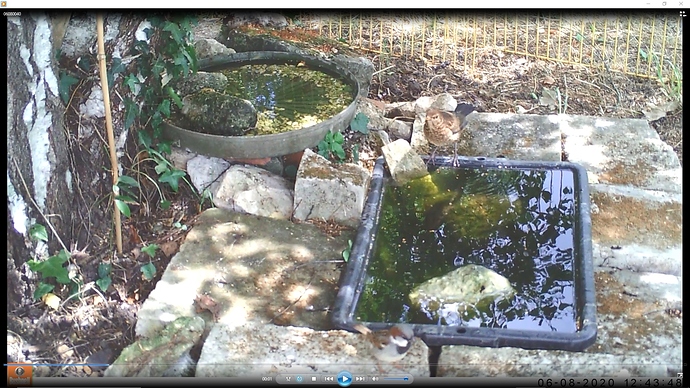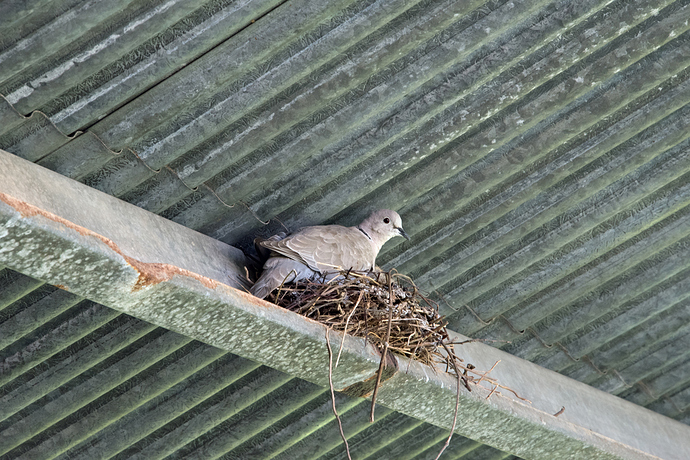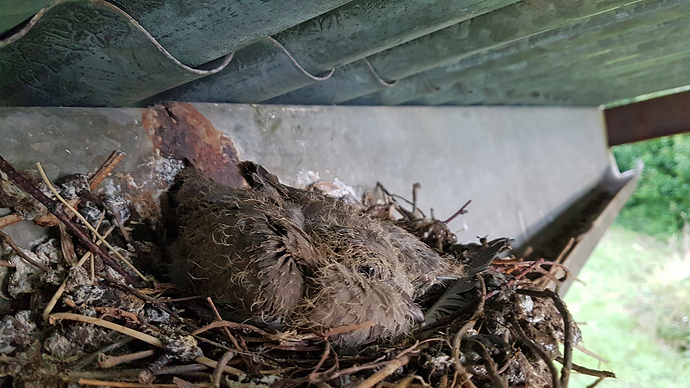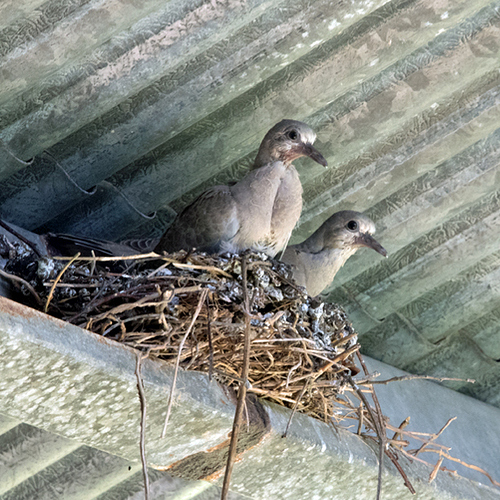Yes, @Véronique Langlands , and I have never found time to download these apps and experienced ( used ) them. Have you ?
I use reverse search online (I am not interested in downloading an app) mainly because I want to see where illustrations in peoples’s presentations have come from (another little weapon in the fight against plagiarism) or I want to find several examples of something particular.
New bird! Think this one is a juvenile greater spotted woodpecker trying to have a bath!
My bird bath camera has been recording here for a couple of years and this is only the 2nd woodpecker caught on film, the 1st being an adult green woodpecker having a drink last summer.
How did the subject of reverse searches get introduced on bird ID?
My wife does the same when checking through students homework - some of the students are pretty bad at crediting the sources of their “inspiration”.
I always find it confusing trying to determine whether male juveniles are GSW or LSW. The GSW juvenile males have red crowns (the red moving to the nape when adult), but also a red patch under the rump, whereas the LSW also have a red crown, but no red patch under the rump. Size comparison to a reference bird might be helpful here !
EDIT : the white shoulder bars would indeed indicate a GSW.
It looks to be bigger than a male sparrow but smaller than a juvenile black bird Alex. It does look like a smallish bird, smaller than a GSW juvenile perhaps, which means it could be a LSW juvenile.
I’ll keep an eye open for it in future sightings.
Male sparrow.
Juvenile blackbird.
Maybe a juvenile LWS.
Nope, I’m wrong! You said it had a white shoulder bar Alex, so it would appear to be a juvenile GSW. Had another look at my old guide to European birds. I think you are right.
You’ll just have to wait until it grows up 
I’ve had a reply from the RSPB and here it is Sue - quote…
Dear Bruce,
Many thanks for your email, photos and recording.
I have to say I am very grateful for the sound recording as well. When I looked at the photos I thought it didn’t look like a Willow Warbler but was beginning to struggle to identify just which warbler it might be; then I listened to the song. I have no experience of Melodious Warbler first-hand but I compared your song recording to that of recordings on Xeno-Canto (a fantastic website if you’re not familiar) and I found what is an extremely close match (also recorded in France) here: https://www.xeno-canto.org/565059 . The bird also has a pale bil which is significant - it would be useful to be able to see the wing of the bird to check the length of the primaries (but given this was on a TV aerial that would be a tall order). Therefore I think on balance it would be fair to say this probably is a Melodious Warbler (Hippolais polyglotta).
I hope this helps,
Mac (Bird ID Volunteer)
I listened to the recording on https://www.xeno-canto.org/565059 and can say that it is indeed the same song of my little TV aerial friend.
It’s raining and is grey & miserable here but even with all windows closed I can hear him singing away!
No, not a Goldcrest, a sparrow is twice the size! A warbler is a good spot but not sure which - so many of them.
Thanks Bruce for posting the RSPB answer. And good to have another website to be able to check - I just love the internet at times like this. Bird books are great but having the flight/movement and the sound as well makes all the difference because so often those are the first things we can see. In my garden we have many many SBBs (small brown birds!) 
Well done Lyn @Monbazillac1 for recognising the melodious warbler.
I get lots of little brown birds as well - many with different markings I can’t identify. Would love to see a wren, which are around - have seen them.
To date I’ve had 21 identifiable birds at my bird bath. I’m not a bird watcher but since I have had a birdbath and a trail camera, am becoming more interested.
Also see cats, hedgehogs, a shrew, a small mouse - and a garden snail which came to drink!
Blackbird
Black Cap
Blue Tit
Chaffinch
Cirl Bunting
Gold Finch
Great Tit
Greater Spotted Woodpecker
Green Woodpecker
Greenfinch
Melodious Warbler
Pine Siskin
Redstart
Ring Necked Dove
Robin Red Breast
Sparrow
Starling
Thrush
Tree Creeper
Turtle Dove
Wood Pidgeon
And many more to come hopefully!
Whoops, the Melodious Warbler hasn’t yet come for a drink or a bath!
Surpising how quickly young birds grow. I was worried about ring necked doves nesting in what seems to be a precarious position, with cats circulating not far below. Took photos of a parent and the 2 squabs on 10th June.
Twelve days later, today the 22nd June, had a peek and saw 2 quite large birds sitting in the nest preening themselves - the squabs have grown so fast!
Why do Collared Doves leave a white scum floating on the surface while having a bath? Seen it many times.
Don’t know anything about their peeing & pooing habits, but don’t think it’s that.
I’d guess it’s something like a white powder that accumulates in the feathers, but don’t really have a clue. Dandruff?
Any ideas?
Huh… I’m certainly not prepared to share that bathwater… even in drought conditions… 

Dander…talk to old school pigeon keepers about pigeon fanciers’ lung!
I suspect you’ve nailed it JJones! I’ve not seen any other birds leaving dander in the bathwater - just the collared doves.
It seems that birds have a special powder that allows their feathers to slide easily, preventing entanglement. And the pidgeon family have very fine feathers, and lots of dander.
Well, first time a Wood Pidgeon has had a bath in my bird bath.
Proof here I think that a Wood Pidgeon leaves no ‘pigeon fanciers’ lung’ scum on the surface of the water, unlike the Collared Dove in the previous video.
Steer clear of Collared Doves flying overhead. Or hold your breath!
Or maybe a very clean wood pigeon on his second bath of the day?
They are grubby creatures hanging around in dusty places, farmyards etc








